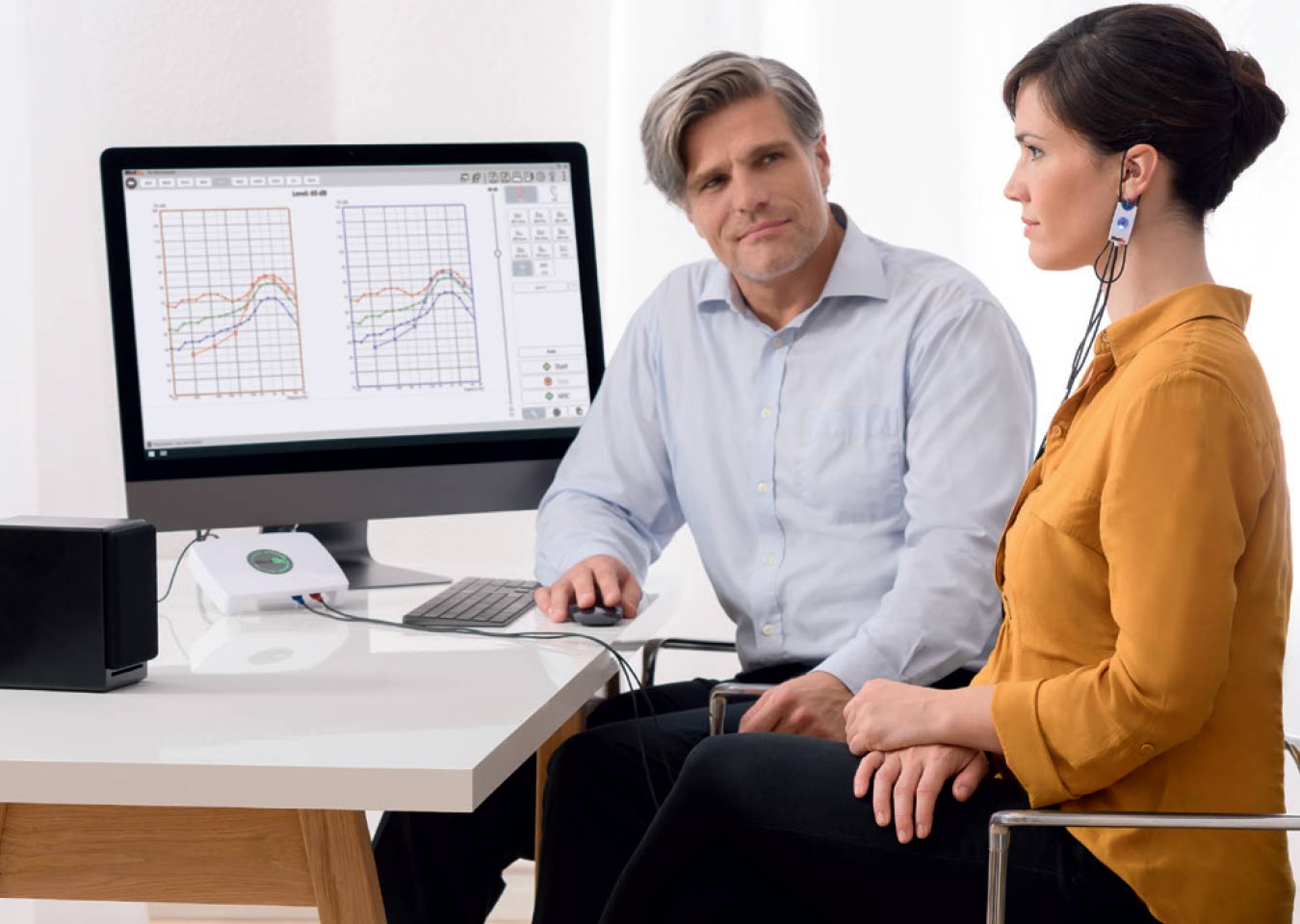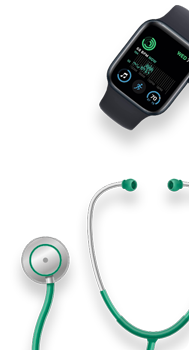What are Real-Ear Measurements (REM)?
Real-ear measurement (sometimes called probe microphone measurement), is the gold standard of care used to determine whether a patient is receiving the precise level of amplification needed at every frequency.
During this procedure, an audiologist obtains readings of the exact sound levels the user is receiving from the hearing aid. The audiologist can adjust the sound levels to match amplification levels based on the patient’s hearing loss across a wide range of frequencies. This helps ensure that the patient is receiving the level of amplification that’s right for them.
How is REM performed?
When performing real-ear measurements, the patient is placed sitting in front of a speaker. A retention cord is placed on top of the external portion of the ear, known as the pinnae. A probe tube is placed in the ear canal first, then the hearing aid is placed second. This allows for measuring the hearing aid output and function.
Speech is then produced from the speaker, while the audiologist monitors the hearing aid output from computer software. This is compared to the patient’s prescription to evaluate whether the hearing aid is performing appropriately.
How does REM Make a Difference?
Without REM, digital hearing aids can only be programmed specifically based on a patient’s audiogram, using the hearing aid manufacturer’s software to do so. This does not consider the details of the patient’s ear canal and may lead to fittings which may be under or over target. Every ear canal is different in length and diameter, leading to a different experience from everyone.
Audiology studies have recommended REM for the following reasons:
- Provides an optimal standard of care to adults and children by utilizing audiology best practices
- Potentially improves overall patient satisfaction and benefit during the fitting process
- Provides confidence that the hearing aids are appropriate and therapeutic for treating hearing loss, avoiding too little or too much amplification
- Helps the clinician in hearing aid troubleshooting, potentially lowering manufacturer repair requests
- Opportunity to decrease the potential for frequent follow-up visits and additional cost






